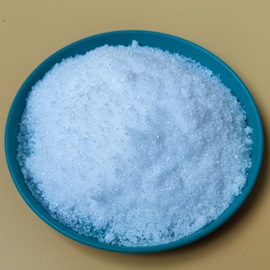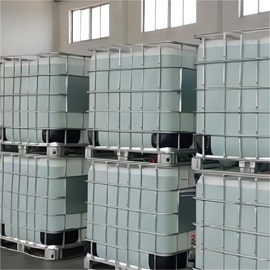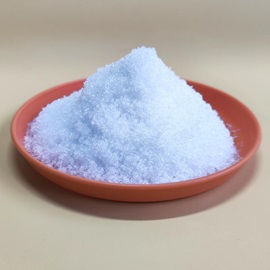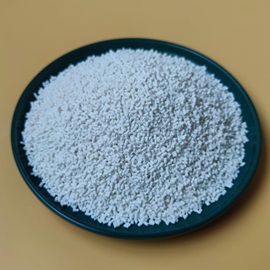Flame retardant
Aluminum diethylphosphonate|CAS225789-38-8
- CAS: 225789-38-8
- MF: (C4H10O2P)3.Al
- Min Order Quantity: 1Kg
Aluminum diethylphosphonate contains phosphorus and carbon, belongs to organic non-halogen flame retardant, has important uses in PA6, PBT, PET, TPE, TPU and other plastics. Aluminum diethylphosphonate ADP is suitable for high extrusion processing temperature, excellent temperature resistance, small water solubility, and can be used with MPP flame retardant, aluminum hydroxide, MCA flame retardant compound synergistic flame retardant, ADP as a separate flame retardant or with other flame retardants used in the compound have shown good flame retardant properties. When compounded with MCA, due to the existence of P-N effect, it can reduce the amount of flame retardant and improve the flame retardant effect at the same time. Aluminum diethylphosphonate is an organic non-halogen flame retardant, used in PBT, PET, PA6 nylon enhanced non-halogen flame retardant, high flame retardant efficiency, can improve the stability of the material, the physical properties of the material has less impact. It has excellent mobility, can be added by side feeding, need to be compounded with MPP, and can completely replace Clariant OP1230, OP1240 and other imported products.
Basic Properties
English name: Aluminum Diethylphosphinate(ADP)
Molecular formula: (C4H10O2P)3.Al
Molecular weight 390.27
CAS NO: 225789-38-8
HS NO: 2931909090
Mechanism of action
1, the main chemical bonds in the molecular structure P-C, P=O, P-O, its flame retardant process is more complex, the special chemical bond composition plays a highly effective flame retardant effect.
2, fast and efficient removal of high energy radicals in the combustion zone hydroxyl free radicals (HO-). In the polymer combustion, aluminum diethylphosphonate will release phosphorus-containing compounds into the flame, and then these phosphorus-containing compounds will be converted into phosphorus-containing radical quencher with flame retardant ability under the high temperature of the flame.
3, phosphorus-containing compounds, the existence of many oxidation states, its thermal decomposition products have a strong dehydration effect, so that the covered polymer surface carbonization, the formation of a carbon film, play a flame retardant role.
4, in the flame retardant system to play the role of condensed phase, to promote the polymer into carbon.
5、It has the basic flame retardant characteristics of phosphorus flame retardant, and it has coalescence phase flame retardant at the same time of gas phase flame retardant.
6, often used in combination with other non-halogen flame retardants such as MCA, Binku, etc. to play a synergistic role.
Product index
Aluminum diethylphosphonate ADP>98%
P:23.0-24.0%
Moisture % (by weight, thermogravimetric method) ≤0.5
Density (g/cm³,20 ℃): 1.2-1.4
Bulk density kg/m³: 400
Particle size(D50,µm):25-55
PH value (potentiometric PH meter): 4.5
Decomposition temperature (℃, TGA heat loss 1%): >350
Product characteristics
1, good water resistance, outstanding hydrolysis resistance, flame retardant products do not precipitate, products have a better appearance.
2, environmentally friendly, fully meet the requirements of ROHS & REACH regulations, and can be compounded with a variety of other flame retardants to play a synergistic flame retardant.
3, less impact on the mechanical properties of PA6, suitable for glass fiber reinforced PA and non-glass fiber reinforced PA, no phosphine precipitation.
4, the introduction of diethyl in the molecular structure, compared with inorganic phosphate flame retardants, its hydrophobicity is stronger.
5, the decomposition temperature reaches 350 degrees, good temperature resistance and thermal stability. Polymer processing does not change color, wide range of applications, excellent processing performance, thermosetting plastics, thermoplastics have a flame retardant effect.
Application Examples
Resin: PBT
Additive amount of aluminum diethylphosphonate (high temperature resistant type): 8~12%.
Additive amount of MPP flame retardant: 2~5%.
Amount of glass fiber added: 15~30
Flame retardant effect: UL94V-0 (1.6mm)
Suggestions for use
1, as a flame retardant can be used alone, can also be used in conjunction with other flame retardants such as MPP, MCA, can play a good flame retardant effect. Diethylphosphonic acid aluminum in the addition of PBT, ADP additive amount of 20% (wt), its materials as electrical accessories, can reach UL94V-0 classification (thickness of 1.6-0.8 mm). When PET is added at 15% by weight, UL94V-0 classification is achieved. The amount of flame retardant added varies depending on the polymer grade, processing conditions, and glass fiber addition.
2, please pay attention to the appropriate amount of stabilizers, coupling agents and other phosphorus nitrogen flame retardants APP, MC or MCA after compounding. For polyester or polyester TPU, only 8-12% of this product is needed to meet the flame retardant requirements, and for SEBS, 25-35% is needed to meet the flame retardant requirements.
3, generally use polyester powder and aluminum diethylphosphonate flame retardant for mixing and processing, can make it fully mixed. Be sure to comply with the relevant domestic safety regulations. The optimal mixing conditions should depend on different situations, pay attention to make sure that all components are evenly dispersed, and the melting temperature of the polymer should not exceed 320 ℃
4, the treatment process, before adding ADP flame retardant, generally should be pre-treatment of polyester materials. If possible, the water content of the material PBT and PET should be less than 0.05% and 0.005% (wt) respectively. ADP flame retardant is not necessary to pre-dry. If a very low water content of the flame retardant is required, we recommend pre-drying (e.g. 3 hours at 130 ℃).
The particle size and surface treatment of Aluminum Diethylphosphonate determines its suitable polymer, and it is divided into three models, each with different specifications, formulations, additives, and targets. Because of the phosphorus-carbon bond in its structure, it has high stability and good resistance to water and solvents. Aluminum diethylphosphonate belongs to the organophosphine series of halogen-free environmentally friendly flame retardants. It has the outstanding advantages of good compatibility, high heat resistance, good dispersion, low smoke, small particle size, small specific gravity, easy dispersion, easy coloring, high efficiency flame retardant, non-toxic, etc.. The increased stacking density of aluminum diethylphosphonate helps the flame retardant to be dispersed in the resin, and at the same time improves the flame retardancy and physical properties of the product and reduces the dust in the process of use. The flame retardant mechanism of Aluminum Diethylphosphonate is different according to the different application formulations, and the flame retardant mechanism is also different when used alone or in combination with phosphorus, nitrogen, carbon, aluminum, and so on. The particle size and surface modification are different, so are the application fields. If you have any questions about decomposition temperature, solubility, filling, reinforcing materials, etc., please contact our technical engineers.
News
Contact Us
Contact: HXOSC
Phone: +86-512-36622455 +86-13358057724(WhatsApp)
Tel: +86-512-36622455+86-13358057724
E-mail: Hxo@hxochem.com Support@hxochem.com logistic@hxochem.com
Add: No. 1377, Fuchunjiang Road, Kunshan Development Zone, Jiangsu Province, China




